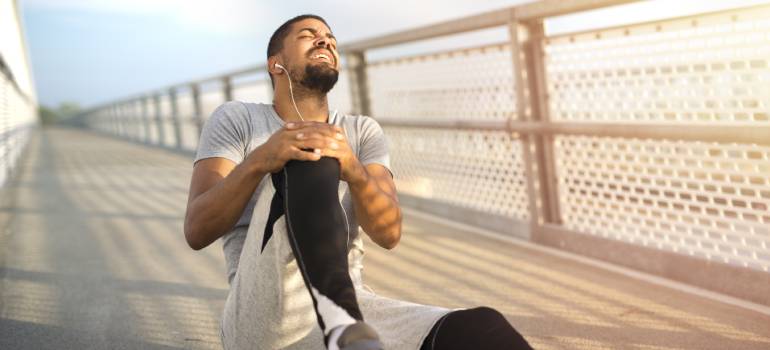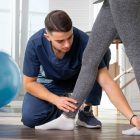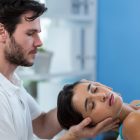Introduction
Runner’s knee is also known as patellofemoral pain syndrome (PFPS). This condition affects runners who often experience sudden intense pain at the front of their knees after running or walking long distances, especially uphill. The pain can last for weeks, months, or even longer.
Runners’ knee is caused mainly due to tightness in the muscles around the knee. Tightness in these muscles puts pressure on the kneecap, causing friction between the kneecap and other bones in the knee. Over time, the kneecap can become inflamed, leading to painful swelling and stiffness.
There are several causes of a runner’s knee. They include tightness in the muscles surrounding the kneecap, improper alignment in the knee joint, stress fractures in the bone or cartilage, and inflammation in the tendons around the kneecap.
When any of the bones from your hips to your ankles, including the kneecap, are out of place, it might exert too much pressure on specific areas. Your kneecap will not glide smoothly through its groove, causing pain.
Bending your knee repeatedly or performing high-stress workouts such as lunges and plyometrics can irritate tissues in and around your kneecap.
When you bend or flex your kneecap, the quadriceps, the huge muscles in the front of your thigh, retain it in place. If they are weak or tight, your kneecap may not stay in place.
Foot abnormalities such as hypermobile feet (when the joints in and around your feet move more than they should), falling arches (flat feet), or overpronation (which means your foot rolls down and inward when you step). These frequently alter your walking pattern, which can result in knee pain.
Chondromalacia patella is a disorder in which the cartilage under your kneecap deteriorates.
Symptoms:
Pain gets worse as you walk downstairs or downhill.
Severe pain when you walk, run, squat, kneel, or even get up from a chair, you bend your knee pain treatment near me.
It is usually in front of your kneecap, but it might be around or behind.
Treatment:
Practice stretching and strengthening exercises, focusing on your quad muscles. A physical therapist will guide you better.
Put your knee to rest. Avoid activities that aggravate the pain as much as possible, such as jogging, crouching, lunging, or sitting and standing for extended periods.
To reduce discomfort and swelling, apply ice to your knee. Do it every 3-4 hours for 20-30 minutes for 2-3 days or until the pain is gone.
For your shoes, consider using arch supports or orthotics. They could aid with foot positioning. You can purchase them at a store or have them created to order.
If necessary, take NSAIDs such as ibuprofen or naproxen. These medications alleviate pain and edoema. However, they can have negative effects, such as an increased risk of bleeding and ulceration. Unless otherwise ordered by your doctor, follow the directions on the label.
Conclusion
Runner’s knee occurs because your body has too much fluid buildup around the joints, causing swelling and inflammation. If you have a runner’s knee, you’ll experience pain when you move your legs, especially after going through a rest period.
Looking for expert treatment for runner’s Knee pain treatment in Gurgaon? Visit Orthocure and get expert treatment and rehabilitation.





